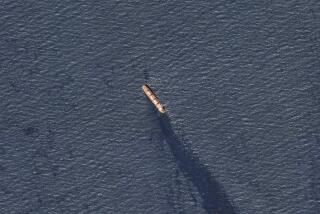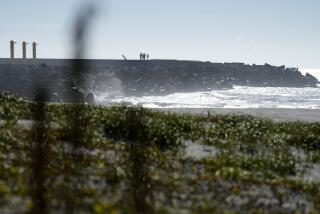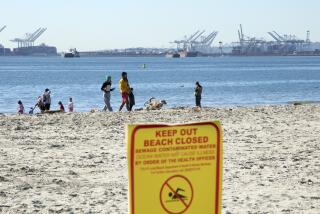Toxic River Spill in China Again Shuts Off an Areaâs Water Supply
BEIJING â A city in southern China shut down its water system for eight hours after a smelter dumped chemicals into a river, residents said Wednesday, a month after a toxic spill in a northeastern river disrupted water supplies to millions.
The latest spill occurred on the Bei River in Guangdong, one of Chinaâs most densely populated provinces and a center for its export-driven manufacturing industries.
The water supply in Shaoguan, 175 miles north of Hong Kong, was shut off Tuesday from about 9 a.m. to about 5 p.m., employees of three downtown hotels said.
âToday everything is back to normal,â said a woman who answered the phone at the cityâs Hotel de Royce. She would give only her surname, Li.
China has suffered a series of such disasters, often blamed on lack of safety equipment or officialsâ refusal to enforce environmental rules that might hurt businesses. The accidents are an embarrassment to the government of President Hu Jintao, which has promised to clean up environmental damage from Chinaâs 25 years of rapid economic growth.
Last month, a chemical plant explosion in Chinaâs northeast spewed 100 tons of benzene and other toxins into the Songhua River, a key water source for millions of people.
The city of Harbin shut down the supply of water to 3.8 million people for five days.
The Songhua flows into the Heilong River, which becomes the Amur in Russia.
In the Russian city of Khabarovsk, authorities cut off water to its 10,000 residents Wednesday to avoid the toxic slick.
By evening, pipes began to pump water once again to the homes of people in three southern districts of the city, with full supplies expected to resume by this morning.
Regional officials said that tests conducted in the Amur so far had not detected chemicals above permissible levels.
But a top environmental official warned the regionâs 580,000 residents not to drink tap water because of the possible contamination.
Tuesdayâs water shutdown in Shaoguan came after the government said a smelter had dumped toxic chemicals into the Bei, pushing levels of the heavy metal cadmium to 10 times the acceptable levels.
It was unclear how many people were affected in Shaoguan, which has about 520,000 people in its urban core. Officials who answered the phone at the Shaoguan city government and water company refused to give their names and denied any disruption in the water supply.
Downstream from Shaoguan, the city of Guangzhou -- Chinaâs southern business center -- was ordered to make emergency plans to protect its supply, the official New China News Agency reported Wednesday.
The Bei flows into the Pearl River, which passes Guangzhou and empties into the South China Sea west of Hong Kong.
More to Read
Sign up for Essential California
The most important California stories and recommendations in your inbox every morning.
You may occasionally receive promotional content from the Los Angeles Times.










